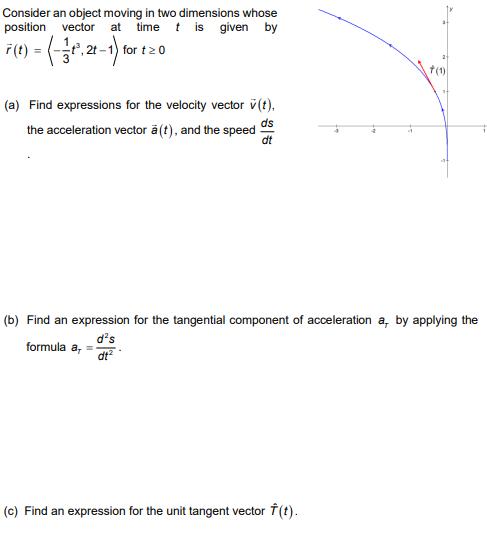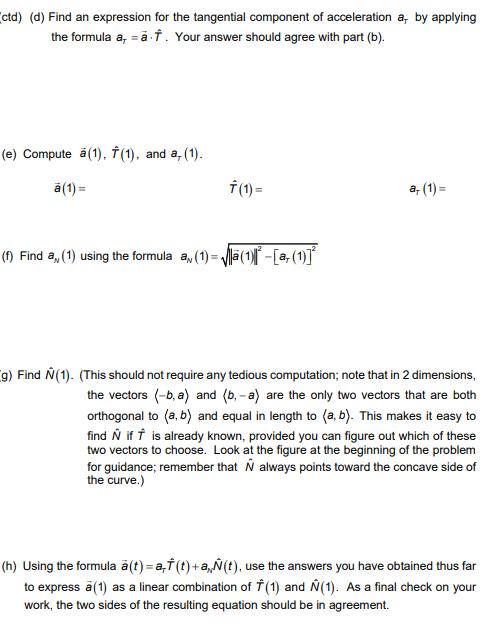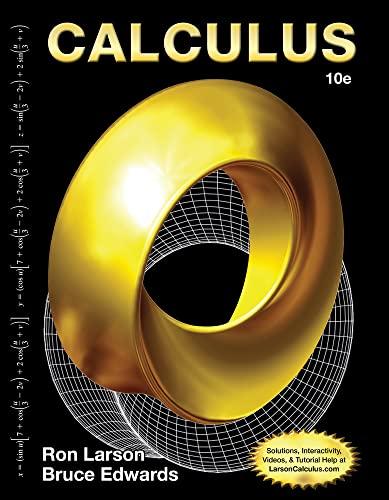Answered step by step
Verified Expert Solution
Question
1 Approved Answer
Consider an object moving in two dimensions whose position vector at time t is given by 7 (t) = (-1, 21-1) for t 20


Consider an object moving in two dimensions whose position vector at time t is given by 7 (t) = (-1, 21-1) for t 20 (a) Find expressions for the velocity vector v(t), ds the acceleration vector (t), and the speed dt +(1) (b) Find an expression for the tangential component of acceleration a, by applying the d's formula a, = dt (c) Find an expression for the unit tangent vector f(t). (ctd) (d) Find an expression for the tangential component of acceleration a, by applying the formula a, = . Your answer should agree with part (b). (e) Compute (1), f(1), and a, (1). (1) = f(1) = (f) Find a,, (1) using the formula a, (1)=(1)-[a (1)] a, (1) = g) Find (1). (This should not require any tedious computation; note that in 2 dimensions, the vectors (-b, a) and (b.-a) are the only two vectors that are both orthogonal to (a, b) and equal in length to (a, b). This makes it easy to find N if is already known, provided you can figure out which of these two vectors to choose. Look at the figure at the beginning of the problem for guidance; remember that N always points toward the concave side of the curve.) (h) Using the formula a(t)= a,f(t)+a,(t), use the answers you have obtained thus far to express a (1) as a linear combination of f(1) and N(1). As a final check on your work, the two sides of the resulting equation should be in agreement.
Step by Step Solution
There are 3 Steps involved in it
Step: 1
Lets break this down step by step a Find expressions for the velocity vector overlinevt the accelera...
Get Instant Access to Expert-Tailored Solutions
See step-by-step solutions with expert insights and AI powered tools for academic success
Step: 2

Step: 3

Ace Your Homework with AI
Get the answers you need in no time with our AI-driven, step-by-step assistance
Get Started


